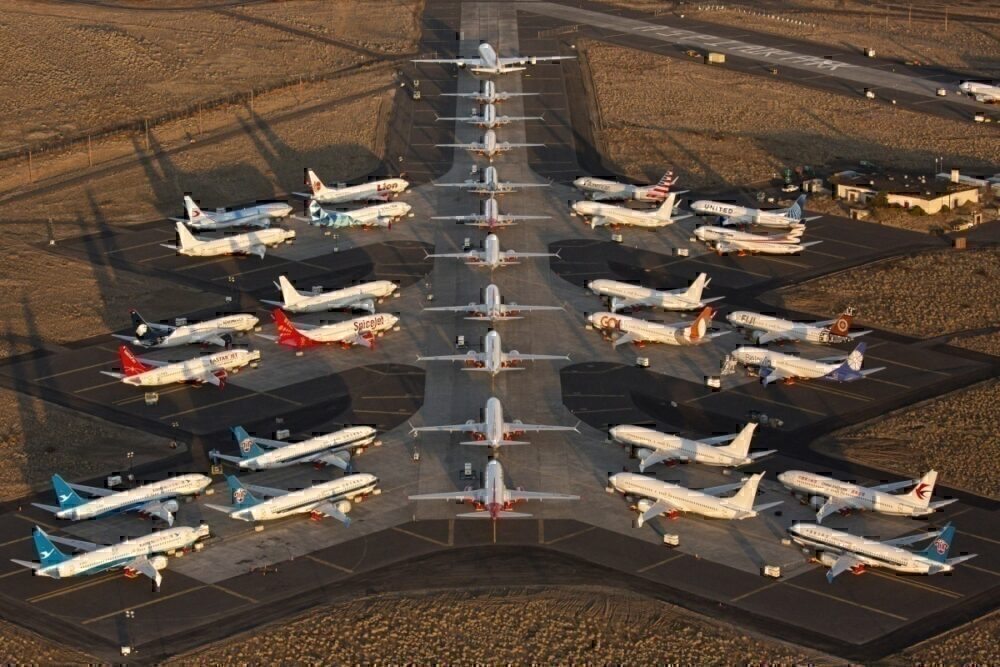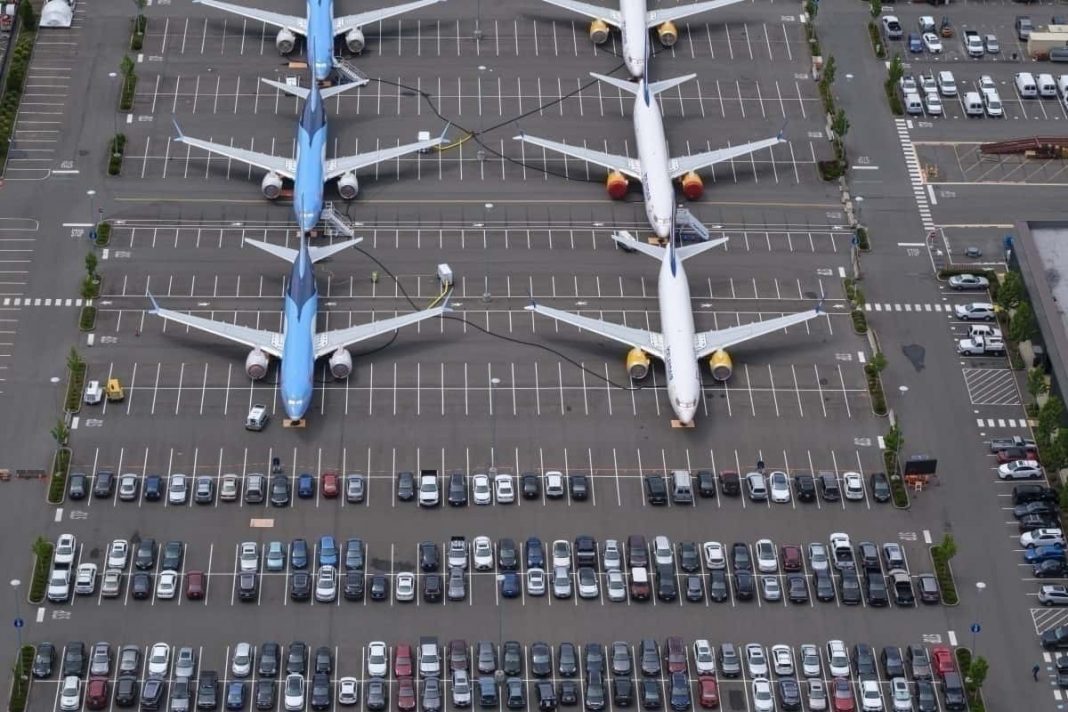Boeing has set itself an ambitious timeline for delivering the stored inventory of 737 MAX aircraft. Earlier this year, it said it wanted to get most of the 450 aircraft settled with airlines within the first year of the type being approved to fly again. CEO of leasing giant Air Lease Corporation (ALC), Steven Udvar-Hazy, spoke candidly about the challenges facing Boeing in an interview with Aviation Week, noting just how difficult the path ahead will be.

Boeings ambitious timeline
Nobody, least of all Boeing, expected the MAX grounding to drag on as long as it has. In the early part of the crisis, the company continued to build the 737 MAX at a similar rate, expecting the type to return to service in a matter of weeks. Over the course of 2019, Boeing began to slow production, eventually pausing it completely in December last year.
Now, with recertification by the FAA, EASA and Transport Canada hopefully just weeks away, Boeing is faced with a huge inventory of stored aircraft. Around 450 are thought to be completed and parked up, awaiting delivery.
Speaking with Aviation Week in an interview yesterday, industry veteran and chairman of leasing giant Air Lease Corporation (ALC), Steven Udvar-Hazy, commented,
“The Boeing Company faces the largest inventory of built new aircraft in its history of more than 100 years.
“Inventory has been built and has been growing, and a number of cancellations can be seen literally every week. Boeing has to make some tough decisions, before the end of the year, on how to deal with this.”

In July, Boeing stated that it would deliver most of the 450-strong stockpile within one year of resuming deliveries. Indeed, during its second-quarter earnings call, the company said it would prioritize deliveries ahead of new aircraft manufacture in a bid to get those planes out of the door.
It’s an ambitious timeline and one that is getting tougher by the day. With cancellations coming thick and fast, and no clear idea just how many will be actually taken up, is Boeing being realistic with this goal?
Stay informed: Sign up for our daily aviation news digest.
The white tails are making it tough
Since the grounding of the 737 MAX, cancellations have begun to flood in. Earlier this year, it was assessed that as many as 600 737 MAX had been removed from Boeing’s order books so far, and the shirking of contracts continues to march on. Some of these aircraft are now considered ‘white tails’ – aircraft that are built but have no customer to take them on.
But this should not necessarily be seen as a vote of no confidence in the 737 MAX. As Udvar-Hazy noted,
“If an OEM cannot deliver a contracted airplane by 12 months from the contract month of delivery… the purchaser has the right to cancel. So, some airlines and leasing companies have decided that, because of the market uncertainty, maybe it’s a good idea to reduce their financial exposure. One less airplane to expense and one less airplane to worry about putting into service.”

The ALC boss expressed concern that many of these cancelations may not really be outright cancelations. The MAX is a great aircraft, after all, and offers significant improvements in both efficiency and operational flexibility over its predecessors. He stated that, in some cases, cancelations may have been enacted as a future negotiating tactic, to improve pricing or other conditions of the sale later on. This, he says, creates a huge headache for Boeing.
“What we have today is a huge inventory of 737s that have been built, many of which have been legally cancelled. But Boeing has a tough time determining how many of those that are cancelled will be reactivated in due course.”

He noted the widespread regulatory hurdles that need to be passed before the MAX is able to fly worldwide. Although the FAA, Transport Canada and EASA are on the road to recertification, multiple other regulatory authorities will need to agree also before the plane is free to fly everywhere. Add on top of that the challenges presented by COVID, and it’s likely to be some time before Boeing has a completely clear picture of what’s happening with its backlog and its stored inventory.
“Airlines are very reluctant to make long-term commitments in this era of uncertainty,” Udvar-Hazy concluded.
While the impending approval of the 737 MAX to fly again is a light at the end of the tunnel for Boeing, it seems it’s just a transition where one problem ends, but a whole raft of others begin. With the ongoing COVID crisis making airlines unwilling to commit to their deliveries, it’s going to be a tough couple of years as Boeing deals with twin catastrophes, the likes of which have never been seen in aviation before.
[ad_2]
Source link


